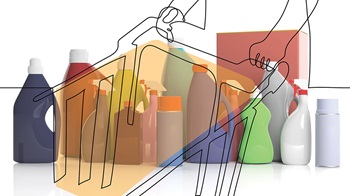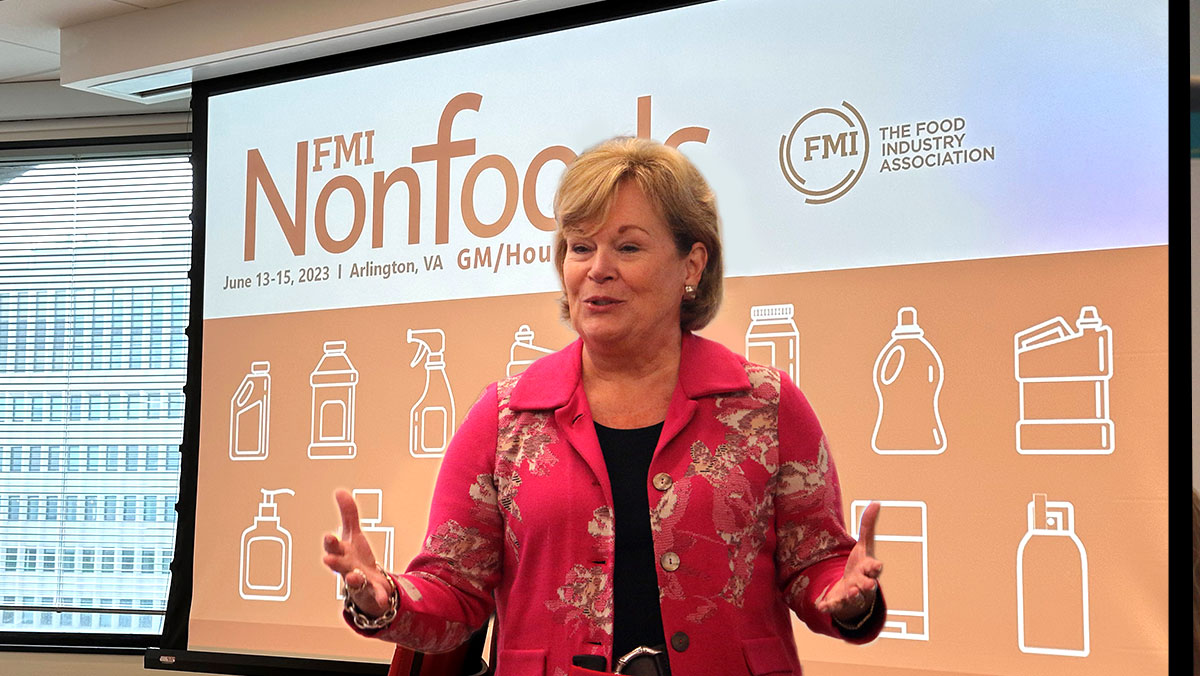This is the seventh blog from FMI's nonfoods in grocery stores series. We share compelling insights from our Power of Nonfoods research among shoppers and industry perspectives to explore nonfoods' role in the food retailing industry.
By: Tom Duffy, Senior Advisor, Industry Relations, FMI
Welcome to Generation Bulk.

No, you didn't accidentally stumble on a bodybuilding website. When I write "bulk," I'm referring to the way people today buy household necessities such as paper towels, toilet paper, laundry detergent and household cleaning products.
When it comes to nonfoods, these products are among the most common purchases. We need them, so we buy them. And, especially since the COVID-19 pandemic, we buy them in bulk.
Consumers shout, "Bigger is better!" as they push Cadillac-sized shopping carts down the aisles of mass, club, dollar and grocery retailers, scooping up bricks of paper towels so massive that they'd absorb at least two of the Great Lakes (the small ones to the south) and jugs of laundry detergent large enough to guarantee their family will have whiter whites and brighter brights for generations to come.
My home is no exception. In fact, we have an oversized pantry set aside specifically for dry goods, paper and cleaning products. Yes, my whites are very white—and my brights? Fuhgeddaboudit!
The good news is that, according to FMI's Power of Nonfoods report, these products generate more than $18 billion dollars in sales annually through food retailers alone. (No, not from me personally, although sometimes it feels that way when I inventory the stockpile in our pantry.)
Here are some additional useful insights from the report:
- Price (51% to 53%) and good value (41% to 42%) trump quality (21% to 24%) in many purchases, but in some cases brand preferences can be strong, particularly when it comes to toilet paper and laundry detergent.
- These purchases are often made only (42% to 45%) or mostly (19% to 23%) in-store.
- Eighty-three percent to 87% of the time, these purchases are part of normal shopping.
- Most consumers buy these products monthly (48% to 52%) or less than once a month (24% to 35%).
- Consumers plan their household necessities shopping 73% to 77% of the time. Impulse purchases only happen 6% to 7% of the time.
- These purchases tend to be made in-store, with 68% to 72% of them happening at brick-and-mortar stores. It's probably going to stay that way for a while, considering only 15% to 17% of shoppers have changed where they purchase in the past 12 months.
My parents didn't buy in bulk as I was growing up the same way we do today. I'm not sure if this was a matter of availability or expense. My wife and I—and many other parents I know from my generation—started buying in bulk when our two kids got older. It just made sense from both a convenience and financial perspective.
Now that they're adults, I don't think the kids give bulk buying a second thought. It's what they've always known and, frankly, it works. There may be other differing opinions between Gen X, Millennials and Gen Z, but when it comes to household necessities, we're all Generation Bulk.


 Industry Topics address your specific area of expertise with resources, reports, events and more.
Industry Topics address your specific area of expertise with resources, reports, events and more.
 Our Research covers consumer behavior and retail operation benchmarks so you can make informed business decisions.
Our Research covers consumer behavior and retail operation benchmarks so you can make informed business decisions.
 Events and Education including online and in-person help you advance your food retail career.
Events and Education including online and in-person help you advance your food retail career.
 Food Safety training, resources and guidance that help you create a company food safety culture.
Food Safety training, resources and guidance that help you create a company food safety culture.
 Government Affairs work — federal and state — on the latest food industry policy, regulatory and legislative issues.
Government Affairs work — federal and state — on the latest food industry policy, regulatory and legislative issues.
 Get Involved. From industry awards to newsletters and committees, these resources help you take advantage of your membership.
Get Involved. From industry awards to newsletters and committees, these resources help you take advantage of your membership.
 Best practices, guidance documents, infographics, signage and more for the food industry on the COVID-19 pandemic.
Best practices, guidance documents, infographics, signage and more for the food industry on the COVID-19 pandemic.
